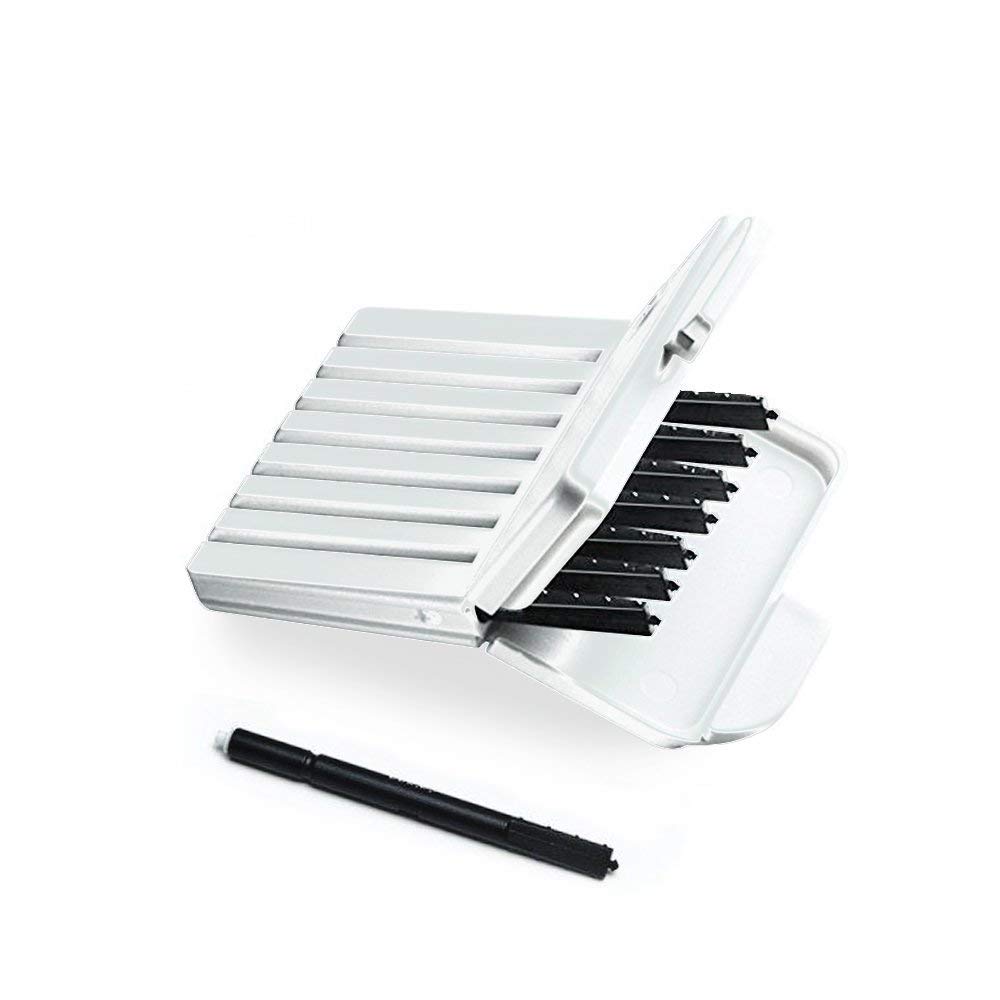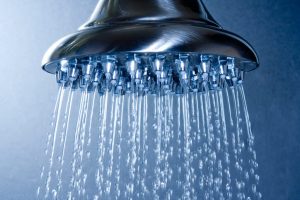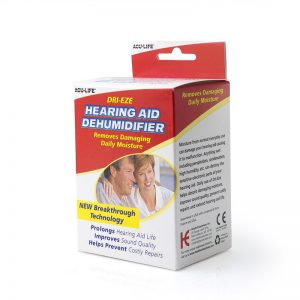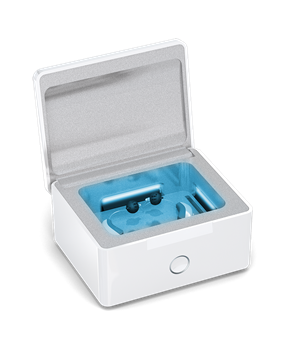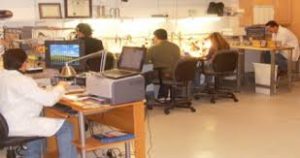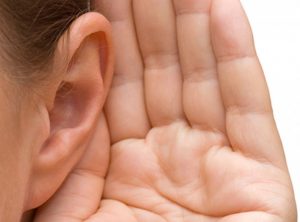Why Hearing Aids Fail
Earwax
The most common cause of hearing aid failures is earwax contamination of the receiver (speaker), receiver outlet or wax guard. The majority of us produce Earwax. Earwax is the body’s way of cleaning our ear canals. Earwax is generated from a gland in our ear canal and flows outwards, attaching to debris, dirt, or foreign matterial in our ears. Chewing and jaw movement aids in the outward flow process. Earwax is completely normal and healthy and a necessary process. Placing a hearing aid in our ear canals interfere with the natural outbound flow of earwax. The placement of hearing aids in to our ears subjects them to earwax contamination.
The Hearing Aid – Earwax Battle
The hearing aid industry has been battling earwax since the beginning. There have been many devices and contraptions developed over the years to prevent earwax form getting into hearing aids. We have seen wax springs, wax busters, wax filters, etc. adnausium. Today, most hearing aid manufacturers have settled on small plastic changeable wax filters as their final line of earwax defense.
But even with the latest improvements in earwax blocking technology, earwax will still migrate through or plug up wax filters. The best way to prevent earwax from damaging or stopping up your hearing aid is to clean them daily. Brush daily the hearing aid receiver (usually white in color and where the sound comes out). Hearing aid manufacturers usually include a small brush with your hearing aids at the initial delivery. An old toothbrush works the best and is easier to hold on too.
When To Clean Hearing Aids
When you clean or brush your hearing aids can make a difference too If you think about it, fresh earwax is usually soft and sticky, similar to wet mud. So when is it easiest to brush mud off? Is it when it is wet or when it has dried? If you try to brush mud off when it is still wet, it just kinda “smears”. Conversely, when mud has dried, it brushes off easily. Earwax is similar, it is best to brush earwax off after it has dried. Normally, people wear hearing aids during the day and take them off at bedtime. The hearing aids and earwax will easier to remove in the morning after it been allowed to dry overnight.
Modern hearing aids have an integrated earwax or wax guard system at the sound outlet opening. Usually these wax filters are white in color and can be easily changed. Brush the earwax filters every morning prior to inserting the hearing aid into your ear.
Changing Earwax Filters
Earwax filters will need be changed occasionally, depending on the individual user and the type and amount of earwax they produce. Hearing aid manufacturers utilize several different earwax filter designs. Generally earwax filters are easy to use and effective. See HearSource.com Wax Filters for brand-specific hearing aid wax filters and guards.
Wet Hearing Aids = Bad
As with any type of electronic device, moisture is not good for hearing aids. Our bodies are approximately 50-60% water. The wearing of hearing aids on our body exposes them to heat, humidity, sweat, dirt, body oils and chemicals. Clean and dry is the best to maintain hearing aids functionality and satisfactory performance. Moisture kills electronic devices including hearing aids.
Dry Hearing Aids = Good
Clean and dry is the way you want to keep hearing aids. Avoid wearing hearing aids when your going to be sweating heavily. Wipe sweat off your hearing aids as soon as possible. As careful as we try to be, accidents happen and there will be situations beyond our control. Hearing aids will get wet. Dont panic. When this happens, promptly remove your hearing aids, remove the battery, wipe them dry, and place them somewhere safe to dry overnight. After they are dry, insert a fresh battery and check for functionality. All hearing aids from the BIG FIVE hearing aid manufacturers are moisture or water resistant. Water resistant infers exposure resistence to small amounts of moisture for a short period of time. Water resistant does NOT infer waterproof. All hearing aids that are exposed to excessive amounts of moisture or over longer periods of time will be susceptable to damage.
There are hearing aid accessories available that help with drying your hearing aids. The two categories of hearing aid drying accessories: active and passive.
Active Hearing Aid Dryers
Active hearing aid dryer designs vary greatly. Active hearing aid dryers use heaters, desiccants, fans, UV lights, or a combination of these technologies. Active hearing aid dryer systems can be extremely effective in the functional life of hearing aids.
For more information on or to buy active hearing aid dryers, CLICK HERE.
Waterproof Hearing Aids
No manufacturer currently offers “waterproof” hearing aids. Signia (previously Siemens), produced a waterproof hearing aid called Aquarius. Aquarius hearing aids are no longer available.
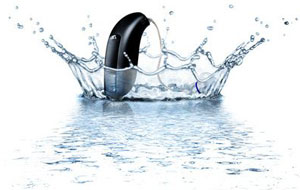
Worn or Broken Hearing Aid Parts
Switches, buttons, dials, microphones, receivers (speakers) can simply just wear out from normal use. They can also be damaged due to crushing, dropping, stepping on them, dogs or cats eating them, etc. When hearing aid failure or damage occurs, the only option is having a professional hearing aid repair lab (HearSource) repair your hearing aid. If your hearing aid is less than one to three years old, it may be still under the manufacturers warranty. If that’s the case, the best option is to send it to the original manufacturer for warranty repair. For the vast majority of hearing aids that are more than one to three years old, you have two options:
- Local dealer – You can travel to a local hearing aid sales office and then they can send it into the original manufacturer or an All-Make hearing aid repair lab.
Hearing aid manufacturers cease supporting their products after so many years. The FDA requires that hearing aid manufacturers support their products for at least five years. After 5 years, it is up to the manufacturer. With older hearing aids, you may only have one option, send your hearing aid to an All-Make hearing aid repair lab. HearSource Hearing Aid Repair Lab has been servicing and repairing all brands, types and styles of hearing aids for over 22 years. HearSource maintains an extensive inventory of older OEM parts.
Trouble-Shooting Hearing Aid Problems
Hearing Aid Not Functioning at All (Dead)
- Battery – Put a fresh battery in your hearing aid. Change it only one time.
- Still not working – check expiration date on battery packaging.
- Clean hearing aid receiver (speaker) and microphone port.
- Still not working – change wax guard.
- For “Thin Tube” designed hearing aids, detatch thin tube from hearing aid and push the thin tube cleaning tool through the hollow tube.
Weak or Muffled Sound
- Brush/Clean wax guard
- Still not working – replace wax guard.
- Brush/Clean microphone.
Static Sound
Moisture is generally the cause of static in hearing aids.
- Take hearing aid out of your ear.
- Change wax guard.
- Dry hearing aid.
- Consider purchasing a hearing aid dryer.

The Pro’s at HearSource Hearing Aid Repair Labs
- You can count on our experience. We have been repairing all brands, types, and styles of hearing aids for over 22 years.
- You can count on our warranty. We stand behind all of our hearing aid repairs with a standard six month or optional 12-month warranty.
- You can count on our lower costs. Lower cost hearing aid repairs compared to local hearing healthcare professionals.
- You can count on our faster turn around time. Faster turnaround time back to you compared to local hearing healthcare professionals.

